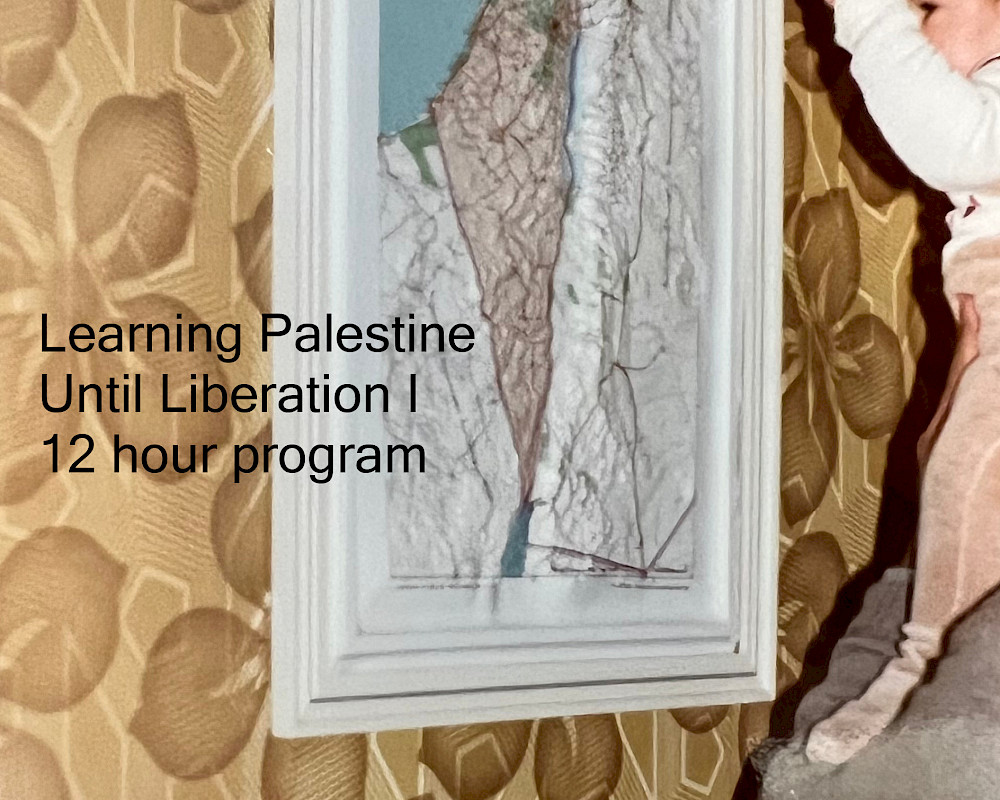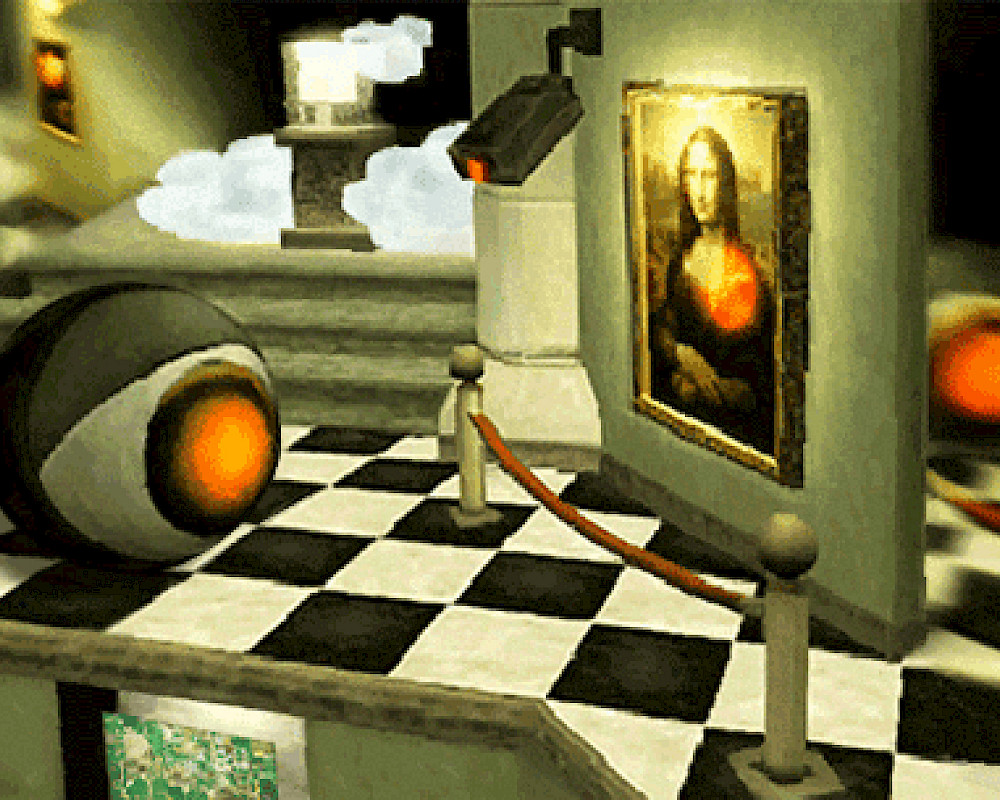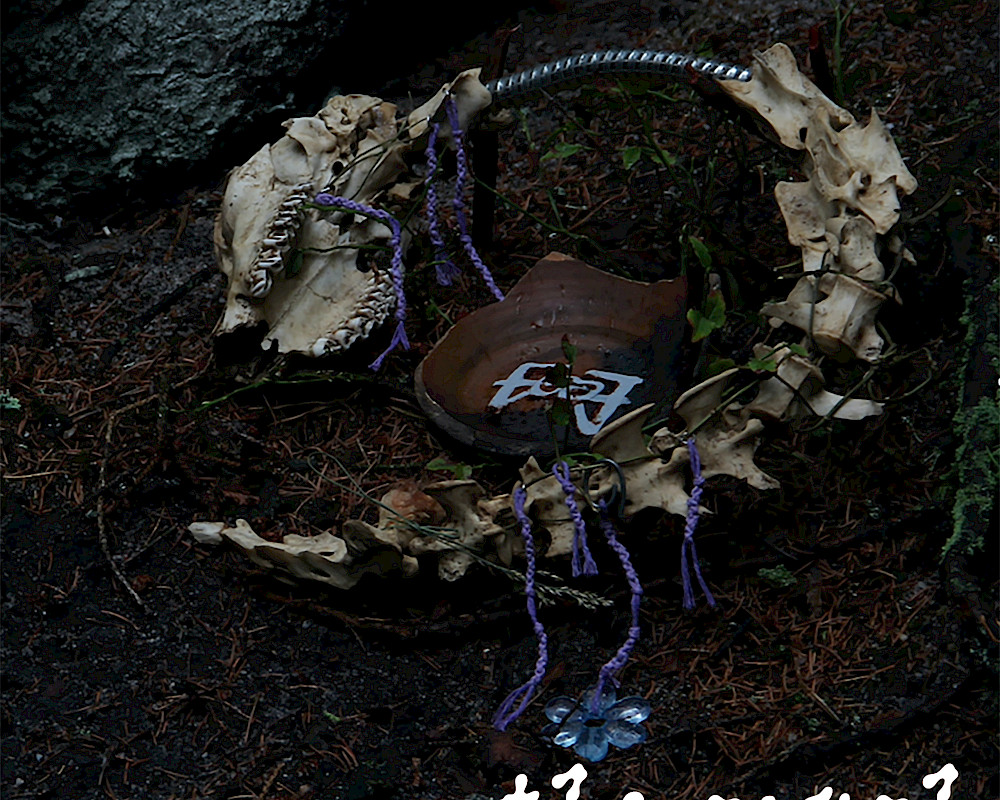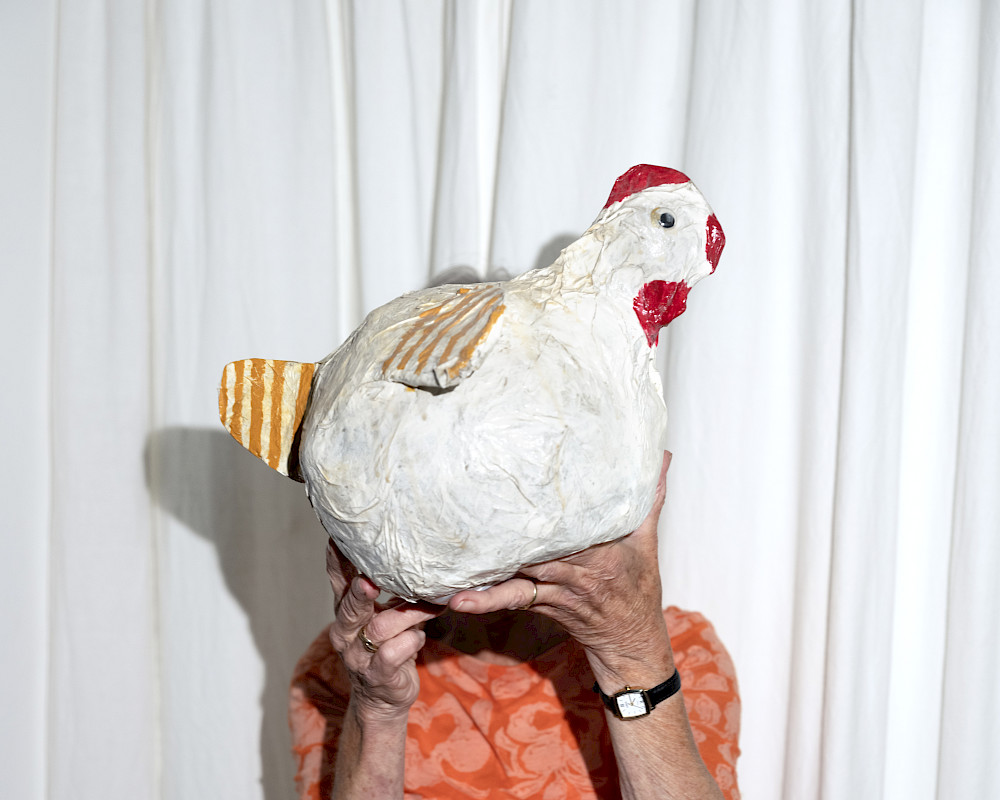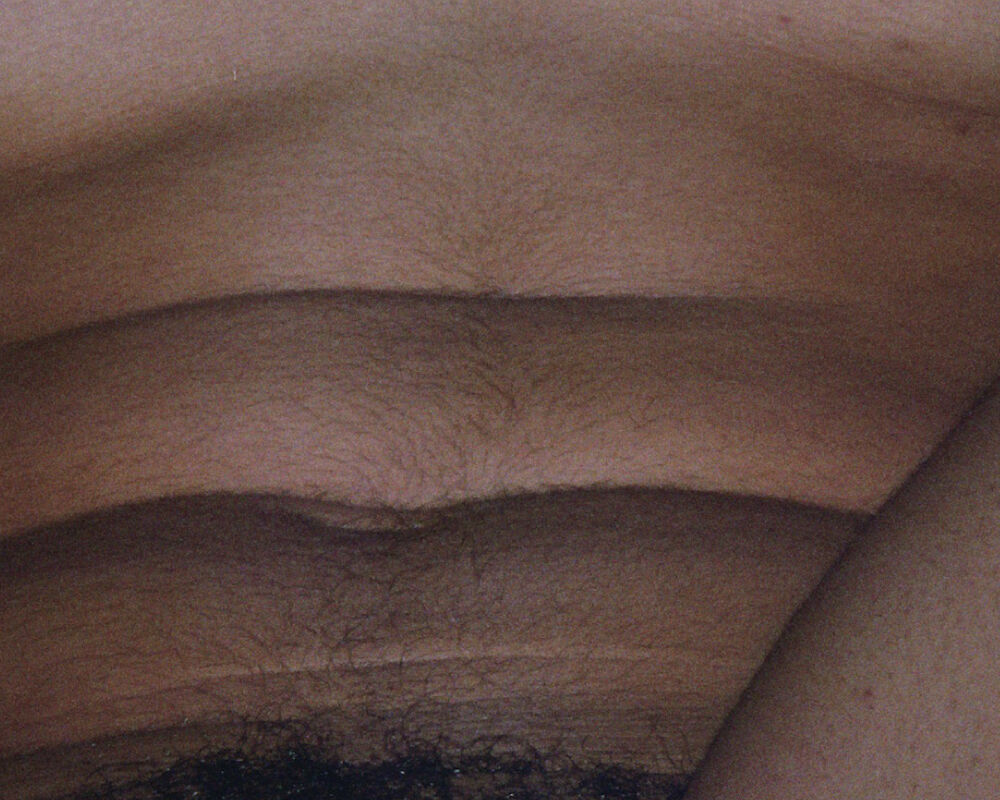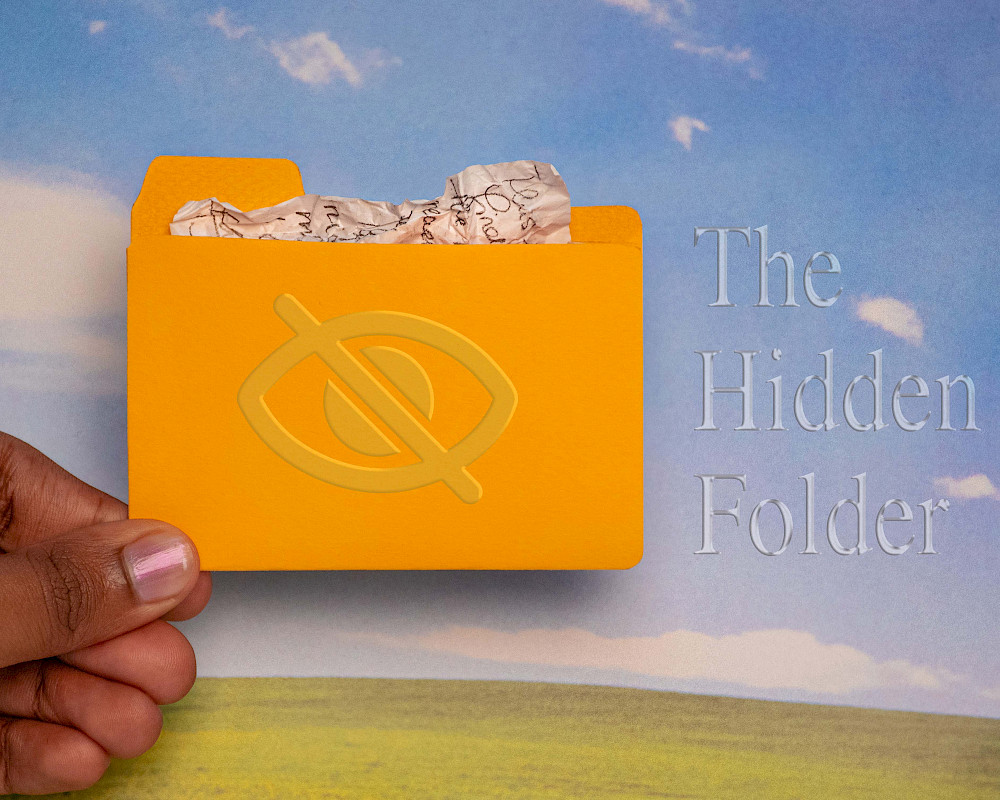essay
When fear rules — a conversation about silence in the Dutch art world
Lieneke Hulshof
Lieneke Hulshof (1993, Winterswijk) studied at ArtEZ Arnhem and completed her master's degree in Art History (Modern & Contemporary Art) at the University of Amsterdam in 2018. From September 2014 to April 2022 she worked at the online art magazine Mister Motley, first as editor and from 2017 as editor-in-chief. She currently works as a freelance art journalist, curator, moderator and lecturer. She organizes lectures, curates exhibitions, writes articles and gives lecture series on contemporary art.
20
min read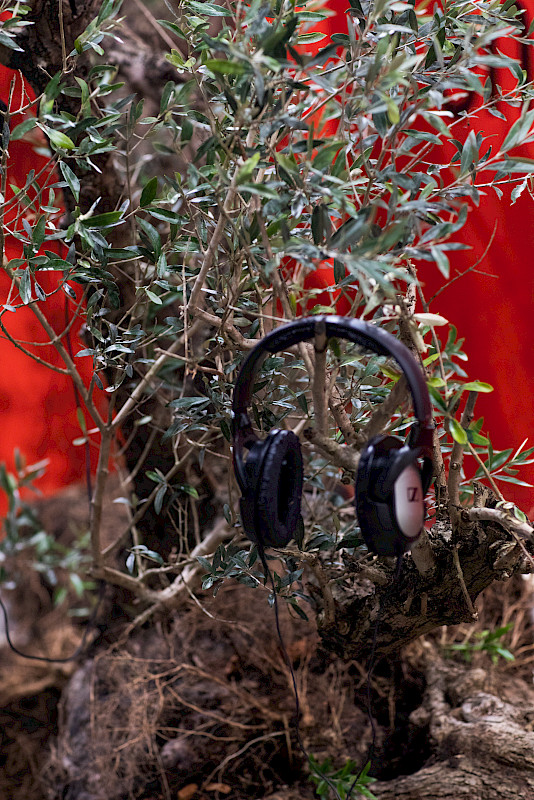
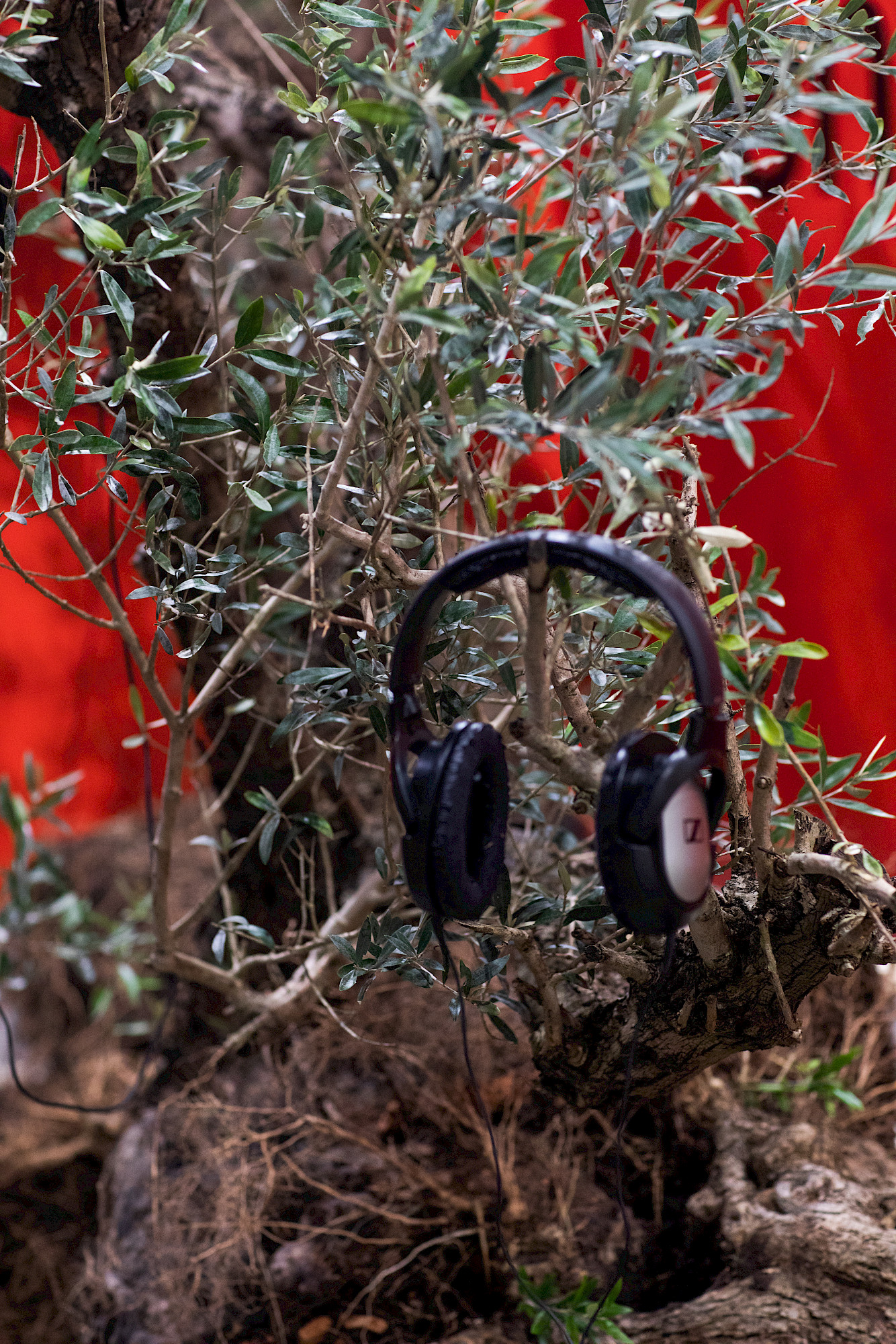
Read the Dutch version here on Mister Motley.
This spring, Dutch artist Jonas Staal published a letter on E-Flux addressed to German institution DAAD explaining why he was declining his nomination for the residency it had offered him. He wrote about the pro-Israeli views of German art institutions and the devastating censorship that ensues. Staal's letter was praised on Instagram; listed among the likes are curators, directors and artists from the Netherlands. Much of the current talk is about censorship in the German art world, but it is remarkable how few Dutch art institutions are talking openly about the genocide in occupied Palestine. Why is this? And how can that tide be turned?
To dive deeper into these questions, I engaged in a conversation with three art professionals. Until her retirement, Mirjam Westen worked as a curator at Museum Arnhem, where she gave Palestinian artists a stage throughout her career. Since the early 1990s, she implemented an inclusive collecting policy for the museum, at a time when that was hardly happening in Dutch art institutions. Maurits de Bruijn is a writer and, among other things, freelance editor of the online art magazine Mister Motley. A Jewish-Dutch national, he has spoken out against the occupation of Palestine for years and writes frequently for various newspapers about how the Israeli government misuses Jewish identity to legitimise occupation and genocide. On October 8th, he wrote on Instagram: 'It is possible. You can denounce Hamas' atrocities AND recognise that Palestinians deserve human rights, land, self-determination and safety.'
Artist Tina Farifteh exhibited her interactive installation 'ik en jij' (me and you) several times over the past six months. She first presented this installation, intended as a temporary intervention and exploration, at the Unfair art fair in November 2023, where it took the form of a phone box surrounded by four uprooted olive trees on the floor of the Westergasfabriek. Inside the cell, visitors took a seat and were invited to talk about how they felt. They were asked the questions: "How are you?" "How is what is happening in Palestine and Israel affecting you here?” Headphones hung in the uprooted olive trees through which these feelings could be heard in random order. This allowed people to share their feelings freely and listen to each other's emotions, but not interrupt each other or engage in discussions. After the fair, she also showed 'ik en jij' in other places, in a slightly adapted form, such as at the Amsterdam Museum. As a result, Farifteh has now built up an archive of diverse, anonymous responses from the first six months of the genocide.
My interviews with Maurits, Mirjam and Tina do not aim to point at art institutions or analyse who is doing what. We are mainly curious to know what possibilities the visual arts can offer to help us talk to each other as a society about the genocide and occupation of Palestine.
What is currently your view of the Dutch discourse on the occupation of Palestine?
MdB: Right after October 7th, I was invited a lot by Dutch media, but I was cautious. I mainly wanted to write within my own framework so that my words and vision couldn’t be distorted. Meanwhile, for months now I have noticed that anti-Zionist voices, especially if you are Jewish, are no longer invited. The voices that are now highlighted in the public debate are one-sided and editors stifle anti-Zionist voices. This resembles German practices. I think we lived under the illusion that there was an open debate in the Netherlands.
TF: I had no such illusion, but what is happening is obviously very severe. I'm from Iran and was used to having, as citizens amongst each other, open discussions about the occupation and oppression of Palestinians. And then you come here, and everyone looks at you as though you are super extremist and radical anytime you talk about Palestine. It's very strange. For years it has been a taboo in the Netherlands to talk about it. Not only within the government and media, but people didn't talk about it among themselves either. That the debate has never really been open has now become clear to many people. And it has also become painfully clear what the price of ignoring injustice is.
Why is it that the debate is less open than many people might have thought?
TF: It has been instilled in us for too long that empathy for some excludes empathy for others, which is of course absurd. This smothers the conversation with fear, and you don't get to the roots of the problem. Namely occupation, oppression and dehumanisation.
MdB: In addition, 'being a Zionist' has become part of Dutch culture. It is embedded in so many facets, from politics to religion to education. It also has to do with racism. The Netherlands is currently on the white side of this war, even though nobody wants to recognise that. I remember learning about Israel in primary school. It was a chapter after World War II about the foundation of the state of Israel, a place where Jews went to live ‘happily ever after'. The whole Nakba just doesn't feature in it. I recently collaborated on a lesson plan for VMBO because teachers don't dare to engage in that conversation in their classrooms anymore. They are afraid of antisemitism and Islamophobia. I understand that; it's not easy, but the conversation is very important. And if that's not an option in a classroom, where else?
TF: An Israeli friend once said to me that we are used to having difficult conversations. Because we have no choice. Dutch society is not used to that. Everything has to be made smooth and nothing should be uncomfortable or abrasive.
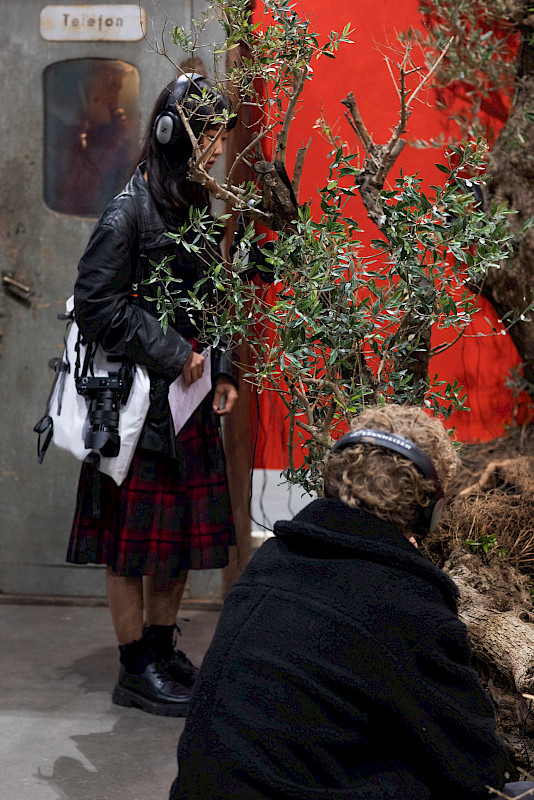
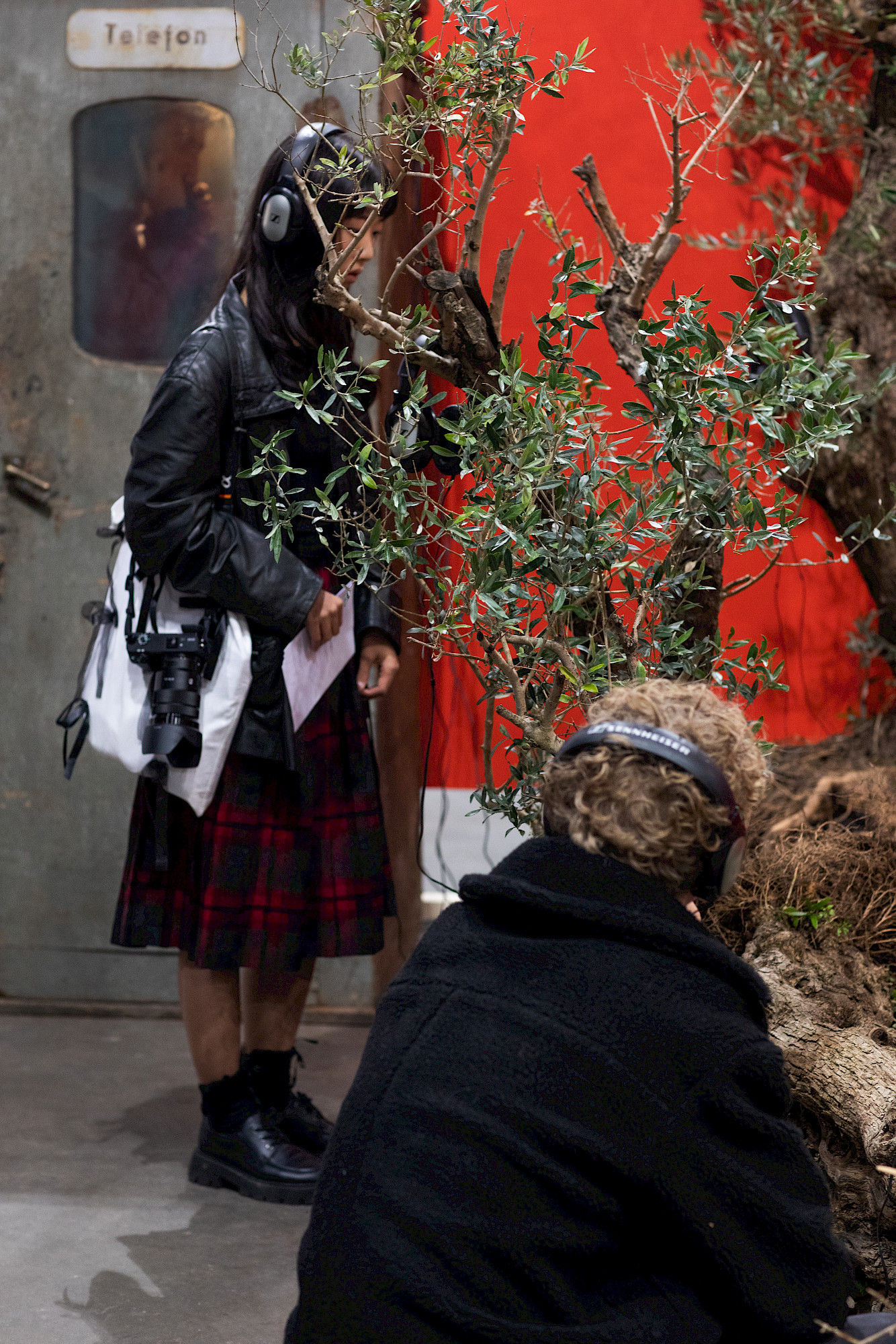
I'm hearing from artists that they’re feeling powerless, Tina is that relatable to you? And how do you deal with that powerlessness?
TF: It's very relatable. It's two-fold, on the one hand everything you do feels incredibly futile. You're in constant shock; you desperately want to help to stop the violence there, but you as an individual can't do that. So you just do something else and that other thing always feels small and weak. I am also constantly fighting my own emotions. You want to continue to feel, to remain human, to react but also to distance yourself to be able to reflect.
When I was invited to show my work at Unfair last November, I was supposed to show work from another project there, but everything felt frivolous. That's when I started 'ik en jij'. Because I saw that the conversation was derailing and that we were unable to listen to each other. I thought: if I change something about how we have the conversation, maybe a different kind of conversation would be possible. Maybe then we will hear each other. It is striking that voices in the phone box are often softer than in politics and media. When people are alone and given space and they don't have to compete with other voices, they are softer and more reflective. You can hear people doubting, breathing and searching for words. Many people say they are afraid of hurting others. People feel unsafe, guilty, hated, paralyzed, perpetrator and victim at the same time. People also have physical reactions, nauseous, eye pain, nail biting. Above all, most people are intensely sad, broken, scared, angry and feel powerless. Among other things, the work has made it clear to me how deep-rooted the narrative framing around this issue is and the extent of the loyalty conflict that many people experience. Within families, at work, between friends and in public.
But the longer the extreme violence goes on, the harder it becomes to keep listening. For me as well. I have also stopped collecting voices. It is confronting to hear that the fear, anger and powerlessness people felt six months ago is still there. While the situation in Gaza has only worsened and our politicians are not acting. What is there left to say now?
Mirjam Westen: Artists express themselves with images and those expressions are never unambiguous. It is never one message, but it is always a polyphonic answer to a question. That is why it is so important to show the work of artists who have the courage to do something, especially now. They ultimately have insights that you won't see portrayed anywhere in the media or history books.
In recent months, I have seen important programmes on the occupation, the genocide and the war, often at smaller art institutions such as Sexyland, The Grey Space in the Middle, FramerFramed, BURO Stedelijk, WORM, Nest, W139 or de Appel. But at most Dutch art institutions/museums, especially the larger ones, it remains quiet at the moment. Why is that? And what could they do?
MW: It is very difficult for cultural public institutions to take a stand. After all, you are a public institution, subsidized with public money. Surely your job is also to keep an open position. So I think museums at this time are more likely to show the backgrounds of occupation. Or the background of a war. Those are stories they can exhibit. How did it originate? Where did this come from? How did this come about? The role of institutions is to start a dialogue rather than proclaim a point of view, because that is more likely to shut down a conversation. I do think there are a lot of museum staff who are struggling with this silence.
TF: I certainly cannot lump everyone together, but I think many institutions are busy 'doing good' instead of 'doing the right thing'. They often miss what a contribution or added value really means. You don't have to write a statement or take a side. But institutions can contribute to open debate, freedom of expression, unravelling underlying structures and fighting dehumanising narratives. To find a solution together here in the Netherlands. We are now dealing with a world where words are banned. People dare not express themselves. Politicians lie or fail to keep to their word, and they shamelessly pit population groups against each other. In the phone booth, people said things they had never spoken aloud before, they didn't dare. What the fuck is wrong with our society that the space to express yourself is as small as that old phone booth? This makes me very angry because I come from a country where those very freedoms are non-existent, people there are dying because they express themselves. People are hanged for speaking out. In the Netherlands, we have that freedom but we take it away from each other. We are letting freedom slip through our fingers.
I certainly cannot lump everyone together, but I think many institutions are busy 'doing good' instead of 'doing the right thing'. They often miss what a contribution or added value really means. You don't have to write a statement or take a side. But institutions can contribute to open debate, freedom of expression, unravelling underlying structures and fighting dehumanising narratives.
Isn't that also a problem for cultural institutions? I don't see many art institutions feeling that there is a problem and that it is urgent. The war is not just there, but here too if we cannot express ourselves freely and engage in a dialogue with each other in a constructive way. We are all contributing to it if we let it happen. It is so absurd that there is still reluctance to use the word 'genocide' for the ethnic cleansing of Palestinians. Why is that? Why aren't we really talking about that? Instead of whether or not we use a word, can we talk about 'why' we do or don't and why we should? That way you can create new meanings together. In a way that doesn’t punish people if it's not perfect or complete. As long as we try.
MdB: I think that issues ignored by the municipality, politics or medical care should not be solved by the arts. The art world should not become a curtain raiser. So, for example, I am happy with conversations the Municipality of Amsterdam is currently having with all kinds of residents about the war in Gaza into which they are also inviting Palestinian journalists and makers. I also have a lot of trouble with Instagram statements by institutions; from me that step can be skipped, and I don't want to impose anything on institutions either. But that fear rules, it shows. And this is quite ridiculous when you think of all those well-educated people who are supposed to work at those institutions. I find it even more intense when it comes to institutions that have been dealing with decolonial practices or issues like intergenerational trauma for years and are now silent. Surely it is also institutional gaslighting to keep quiet now. They've been making programmes for years and now they're pretending that they did not learn from any of it and are not drawing consequences from it either.
It would be good if there were more room for flexibility. The arts field should be encouraged to facilitate themes and stories that are needed now. We are always looking forward or back; you saw that in the pandemic while it was still going on. We can't do it, being in the now. But still, I think it is necessary to be able to get through it as a society, similar to a grieving process."
TF: It is easy to reflect on what we should have done in 20 years' time, when everyone agrees and there is nothing at stake anymore. What is your role now?
MdB: A friend of mine said very simply last November; 'I am now seeing in real time how colonialism is being sold to people'. That alone, it's a very small observation, art institutions could do something with that. What are those mechanisms? How does that avenge itself in language? How does that avenge itself in messaging? Who is currently getting a podium and who is being silenced? It may sound opportunistic, and I don't mean it that way, but all kinds of things are also happening right now that can act as a huge mirror for the past and the future. We spend a lot of time talking about the Netherlands as a coloniser in the 17th century, but we weren't alive then. We guess at how colonialism was sold to the Dutch in the 17th century. But why don't we draw that line to how that is happening now?
TF: Susan Sontag saw images of the Holocaust in a bookshop as a 12-year-old girl and it changed her whole life. We see extremely violent images on social media every day. What does that do to us? The Dutch government has a vested interest in selling weapons, (the former) prime minister Mark Rutte is busy with his own career, social media companies want us to be angry with each other because then we'll spend the longest time on their platforms and they profit as a result. The infrastructure of our thinking and feeling is constantly outsourced to parties that have absolutely no interest in us getting any solutions AND there is no moral leadership. Surely then, there's a huge gap? This makes the world more unsafe for everyone. Of course, not all institutions have to solve everything, they can't, but there is a part to play, I think, in picking up some of that gap. To facilitate constructive and open conversation.
MW: I am very concerned that the war in Gaza cannot be talked about openly, and I know a German colleague who has just been fired partly because she was going to show an artist who stood in solidarity with Palestine. In my career, there has never been a conflict between the politically tinged exhibitions I made and the museum's principles. I was always given total freedom. In all honesty, I don't know if you still have that freedom now as a curator. Fifteen years ago, for instance, I organised a solo exhibition by Palestinian artist Emily Jacir at the museum, which was wonderful. She asked all Palestinian stateless friends from around the world; 'I'm going to Ramallah again soon, what can I do for you there?' People would then tell her to go to that one tree, to that mosque or to that grave. And from that she made a photo series, in those images everything was encapsulated. The exhibition was met with rave reviews and no one found it problematic then.
When I joined the museum, Liesbeth Brandt Cortius was director, and she wanted a flat organisation. I had a lot to say about exhibition policy, we really did it together. I think in the present day the hierarchical relationships in museums have returned because there are more and more demands placed on them. They have to attract more visitors, fend for themselves, so the face of a director has become more important. Curatorial freedom may thus be more restricted. Political exhibitions are directly at odds with funders.
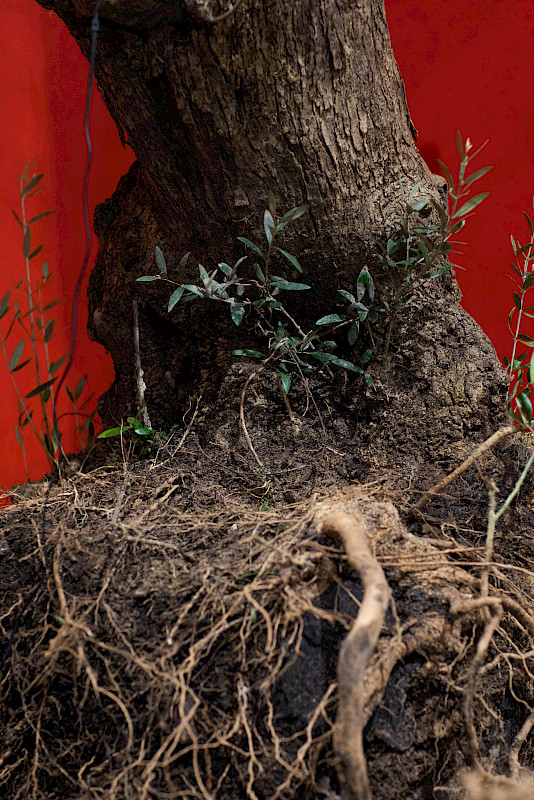
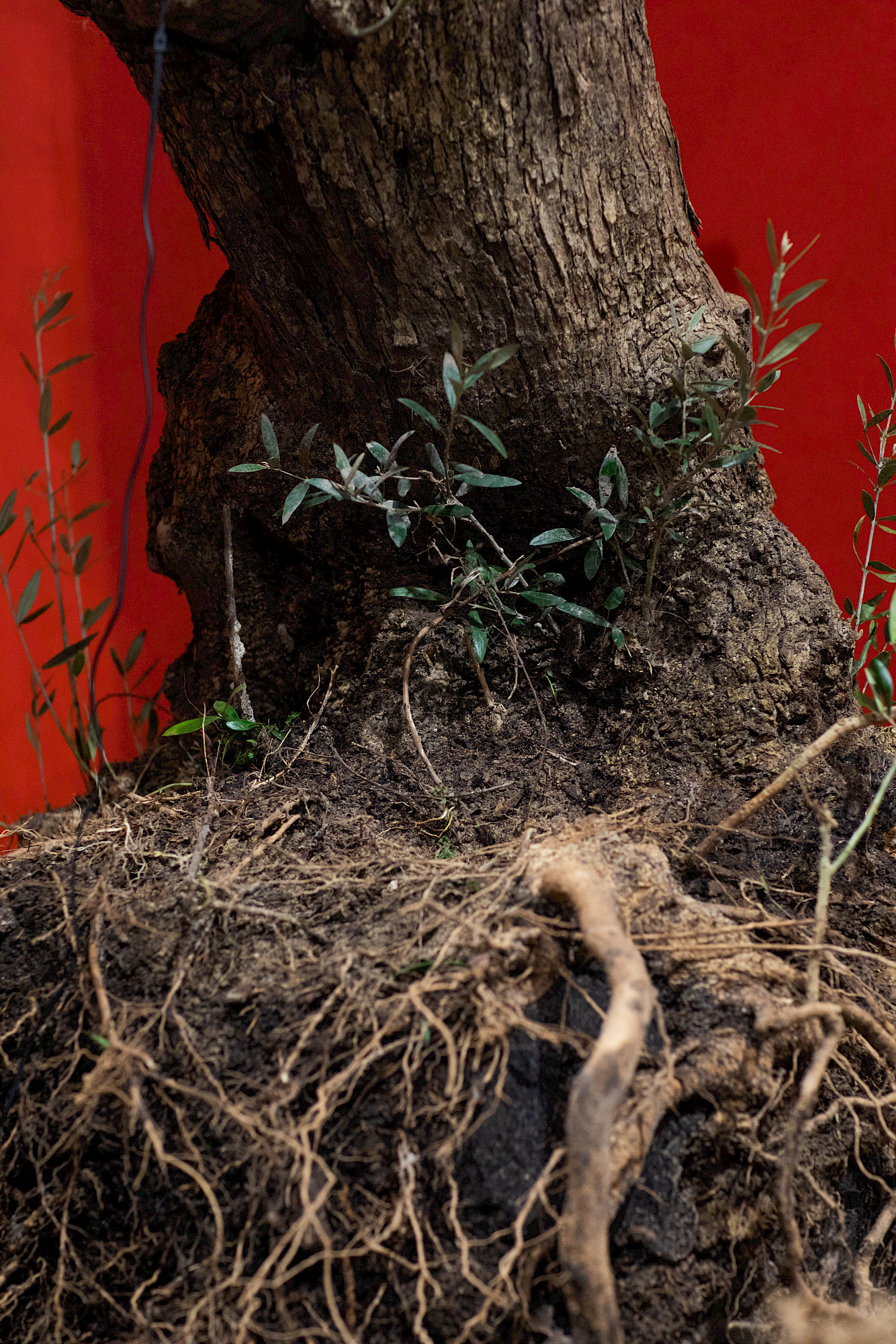
I do see a lot of artists, such as Jonas Staal, speaking out and expressing their views. Often more clearly than many institutions, curators or directors do.
MdB: Artists are equipped to see beyond the dominant narrative, but I also think they are currently being thrown in front of the bus. A letter by Jonas Staal that is so widely shared also illustrates a problem. That gap left by those institutions is partly filled by individuals. I think that includes me. But it is actually part of the problem: I can write something on Instagram about the occupation and that such a post gets 6,000 likes. Besides, I think many artists have found refuge in the art world because it promised an idea of progressiveness. Artists encounter disappointment that progressiveness is lacking. I don't want to speak for others, but I also think that's what we see. That is why they are speaking out vehemently.
MW: I thought that letter from Jonas Staal was very good. I was so impressed by how well he articulates what it is truly about. And it means that Staal will now no longer be invited to Germany by any institution, so that speaks volumes of courage.
Still, I would never ask artists to speak out for or against anything. Artists are in a very vulnerable position. I rely on their work. Indirectly, I know that's where their view can be found. There is still a huge taboo in the art world to speak out for something. The relationship between art and politics should not be too intimate because then artworks would just be political pamphlets. Surely this has to do with the old view that art should be something autonomous and above social problems. I think the myth of autonomy is still very much in the way. And related to that is the fact that if you speak out on political issues, you will be pushed into a corner. 'We're not going to listen to that, art doesn't raise questions, it just gives answers.' In doing so, it closes itself off to the public. That is still a dominant thought that prevails.
So how can we ensure that activist artists and Palestinian creators are not overburdened in this conversation? How can they be approached in a safe way?
TF: I think it would help to ask artists themselves what they need. If you are having a conversation with a Palestinian artist, you could ask: what do you need from us? That might sound simple, but that step is often skipped.
MdB: Many institutions programme and facilitate, but real involvement can remain superficial. Just providing a platform and paying the artists is not enough, the work involves more. That applies to all exhibitions but especially when it comes to these themes. Because certainly when, as an institution, you are programming art about Israel or Palestine, and there are reactions, you need to know what the artwork is very specifically about and what is the reason you have programmed it. You need to have a position on that work and be able to justify showing it. Only then is there enough security that the public and the media can respond to it without the institution panicking in response.
In addition, I learned from Ukrainian architect Lesia Topolnyk that there are many creators who do not want to earn from war. When she was going to get money for a collaboration with Mister Motley, she asked us to donate it in her name. Therein lies an important question for art institutions too. What are we saddling artists with by paying them for their work on war themes like genocide? Institutions could, for instance, donate the same amount they give as a fee. I am not saying it is necessary or that it can always be done, but it is good to think about other ways of working within a context of war. As an institution, really try to sit in the maker's chair and empathise. What is it like for artists to show this work and what protection do they need? What language? How do we pay them? Eventually that exhibition will get there, what matters most is how you create it and what trade-offs you make along the way.
***
Author’s note: After the interview, Tina emailed me with a supplement, which I will summarise and supplement here: The genocide in Palestine causes extreme suffering and casualties. There is manipulation through words, and we are dealing with the erosion of international law through the double standards applied by the West making the world more unsafe. This toxic cocktail ultimately affects everyone. Art is often about engagement and for this reason alone it is relevant to see how the Dutch art world can respond to this dangerous cocktail. As this interview also reveals, there are institutions that have not been silent over the past six months, but there is no denying that the occupation of Palestine remains largely unaddressed in the Dutch art world. The difference is great compared to how museums, for instance, reacted to the Russian invasion of Ukraine two and a half years ago.
After my conversation with Mirjam, Tina and Maurits, it became clear to me that art institutions do not necessarily have to come out with viewpoints and statements, but they can acknowledge that we have a problem related to freedom of conversation. The question of what an institution can do can only be answered by an institution itself. It is a question about why museums, galleries, art venues, art journals, funds, debate centres and project spaces are on earth in the year 2024. I think when institutions ask this question internally, suppressing the possible tendency to act in the name of their image, a sincere answer is likely to follow. I hope art spaces will subsequently have the courage to articulate that answer. And that we, the audience, understand that not everything can go right. But please let the silence stop.
*This is not a historical essay and so it cannot cover all the facts of the history surrounding the occupation of Palestine. I have chosen to zoom in on three specific voices with which I attempt to paint a picture of the general atmosphere in the Dutch cultural field today. The interview took place in early May 2024, a week before the Dutch student protests.
